
By Joe Pronesti
We have all seen our fair share of defensive fires. Whether in real life or watching videos, we tend to see the same things over and over, especially in what we as a collective fire service may view as a “loser,” something doomed to fail. The Eastlake (OH) Fire Department could’ve certainly faced such an event, but because of proper size-up, building construction knowledge, coordination, historical and institutional memory, and the ability predict likely fireground events, a popular Northeast Ohio store was saved and property conserved.
RELATED: Commercial Building Fires: When To Go Defensive | Tactical Fire Objectives for Commercial Occupancies | Mastering Fireground Command: Firefighting in Commercial Occupancies
About the Eastlake Fire Department
Chief Theodore Whittington leads the Eastlake Fire Department, which protects a population of about 18,500. It operates out of one station and has a minimum staffing of six personnel daily with a total roster of 26 members. The agency handles approximately 2,900 calls a year, much of that for emergency medical service.
Quick Facts About the Building
Built in 1963, the 18,779-square-foot building was being used for furniture, hot tub, patio furniture, and pool table sales. It was a Type 2 (Limited Non-Combustible) structure with a flat, metal decked roof, with no gravel on roof. There was no fire protection and no detection System. The second-floor mezzanine also had metal decking with concrete floor, and there was a third floor on the East end of structure. The building was packed with furniture, hot tubs, kitchen tables, etc.
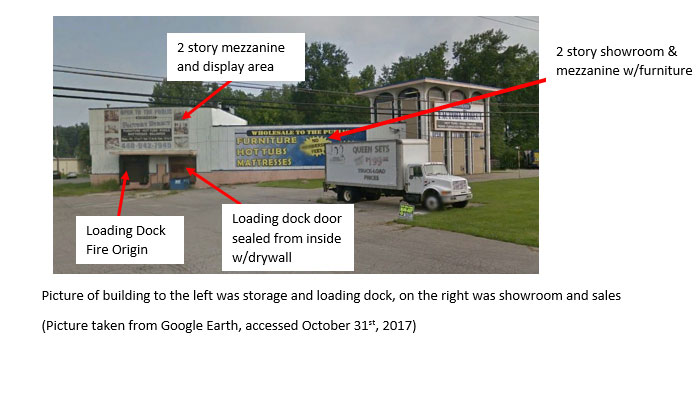
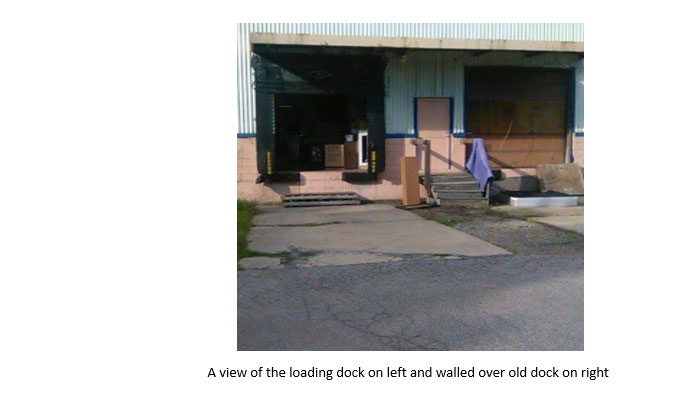
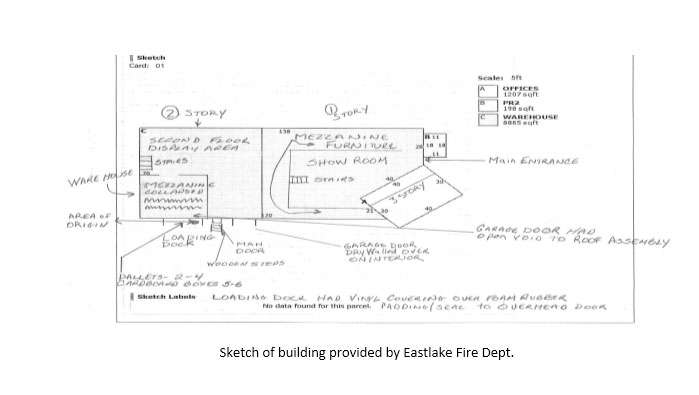
The Fire
The fire began in the loading dock area. The occupants inside the showroom area were unaware of the incident unfolding until a passerby came into the store to report it to them. At 1315 hours, the dispatch was made to the fire department and auto aid companies were also notified. This first alarm delivered one command vehicle, one chief’s car, two squads, one engine from Eastlake, an aerial from neighboring Willoughby fire, a quint apparatus from Willowick fire, and a medic from Kirtland fire.
While responding, crews were alerted to multiple calls, but no header or indication of a working fire was visible to units. Battalion Chief (BC) Bob Lloyd (1710) arrived and parked in the driveway to the west. He reported a working fire and upgraded the alarm, bringing additional resources to the scene. He immediately had his first in Eastlake engine (1713) go to the west entrance and set up their deck gun to the loading dock door while a hydrant was being hooked for supply.
In addition to the deck gun, BC Lloyd ordered 2 ½-inch line to the loading dock as well and had the first-due ladder set up for a roof report and get ready for water operations. Firefighters then breached walls and applied water to attack the metal deck roof fire that ensued. An oft-forgotten problem when fighting fires in Type II non-combustible occupancies is that, once the fire reaches the underside of the roof, it heats the tar on the top of the roof. The gases created by the fire have nowhere to go but down, and the fire will ignite these gases, causing a fast-spreading fire across the underside of the roof. The best way to attack this type of fire is from the underside, which indeed was the tactic of choice by BC Lloyd.
The fire was declared under control at 1442 hours, one hour and 27 minutes after arrival. There were no injuries.
Although the fire did not get past the warehouse and loading dock area, it filled these areas with heavy smoke. The video below shows just how dangerous the conditions deteriorated because of the products burning–upholstered furniture and boxes–a lesson found from the tragedy in Charleston, South Carolina, at the Super Sofa Store fire.
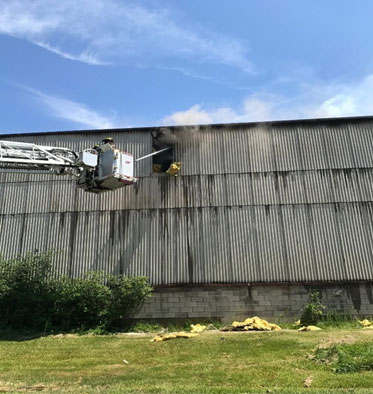
Effective cooling of the underside with aerial streams stopped the metal deck roof fire cold.
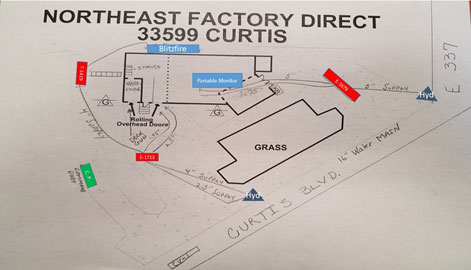
A great example of a crude yet effective way to show apparatus and line placement. This is a must when conducting post-fire critiques.
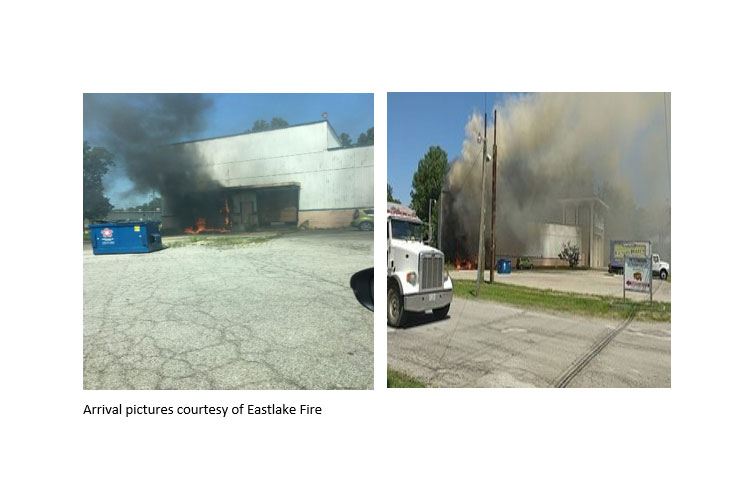
The Good Things
The value of training: The shift on duty had just completed a deck gun drill the previous shift. Their quick and effective use of the deck gun enabled them to hit the fire hard.
Recognition of a metal deck fire: As mentioned above, one of the concerns with Type II construction is the metal deck roof fire. Crews benefitted from the early recognition of this feature and the use of the aerial stream from underneath to stop the forward spread of fire. Too often, incident commanders (ICs) place aerial streams from the top down, essentially waiting for the entire roof to burn off and collapse. While there was some collapse, in this instance a majority of the structure and contents was saved.

Collapse of area near loading dock, recognition of the hazards and fire spread in a Type II is paramount to an IC.
Sectored off quickly: One item that has changed significantly yet still flies under the radar is the failure of chief officers to sector off a fireground. This can often result in ICs getting lost in “the fog of the fireground.” The county in which Eastlake resides does a wonderful job of getting chief officers to working fires. The more eyes you can get in critical positions, the safer the fireground. Many departments and chiefs are either afraid to send their commanders into another jurisdiction or too ignorant to understand the importance. The everyday practice in this area proved yet again to be successful and a great lesson.
Use of heavy equipment: The use of heavy equipment such as backhoes made getting at the hidden fire much easier after knockdown and during overhaul. This decreased firefighters’ exposure and also reduced the threat of collapse of heavy materials such as mattresses.
Firefighters must continue to learn from the lessons found on our fireground. Sometimes we can spend all our time learning by focusing on the tragedies of the fire service, but it is my hope that this success story gives you motivation to look at your Type II buildings and help prepare you for your next fire.
Bravo to the Eastlake (OH) Fire Department and their leadership for a job well done!
 JOSEPH PRONESTI is a 26-year veteran of the Elyria (OH) Fire Department, where he is an assistant chief and shift commander. He is a graduate of the Ohio Fire Chiefs’ Executive Officer program and a lead instructor at the Cuyahoga (OH) County Community College Fire Academy. He is a contributor to fire service publications and sites, including Fire Engineering. He can be reached at efdcaptain33@gmail.com.
JOSEPH PRONESTI is a 26-year veteran of the Elyria (OH) Fire Department, where he is an assistant chief and shift commander. He is a graduate of the Ohio Fire Chiefs’ Executive Officer program and a lead instructor at the Cuyahoga (OH) County Community College Fire Academy. He is a contributor to fire service publications and sites, including Fire Engineering. He can be reached at efdcaptain33@gmail.com.
THE ‘FOG’ OF THE FIREGROUND
Part 2: Communications on the Fireground
Part 4: Lack of Command Level Mayday Preparation
Part 6: Firefighter LODDs in Gloucester City (NJ) Fire

